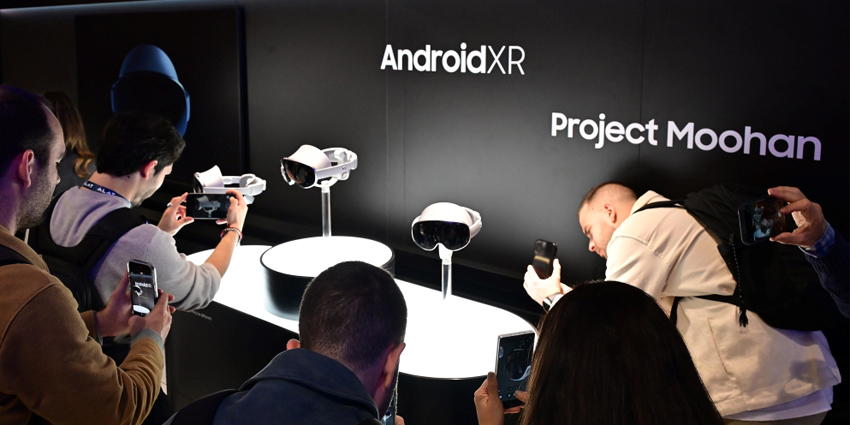MWC 2025 is proving itself to be a hotbed for XR innovation. Several major firms are taking to the event to showcase the latest in their AR/VR/MR endeavours, with a headline-stealing showcase coming via Samsung’s Moohan exhibition.
At MWC 2025, Samsung showcased many products, from its mobile AI suite to new smartphones. However, a common talking point is its Moohan headset, and this week is no different as Samsung had three headsets on display at the event for looking only.
The device comes as a cross-collaboration between Samsung, Qualcomm, and Google, with Qualcomm providing a chipset foundation and Google working to deploy its much-touted AndroidXR framework on the upcoming headset.
While attendees could not get hands-on with the devices and few details were mentioned, the confident showcase brought many eyes as Samsung seriously stakes its claim in XR following years of speculation.
While MWC 2025 only gave attendees a glimpse of the upcoming headset, here is everything readers need to know about the upcoming device.
Details Specifications and Speculations
This joint venture between Samsung and Google is set to compete with the Meta Quest and Apple Vision Pro. At Galaxy Unpacked 2025, Samsung set the stage for bringing powerful AI integration to mixed reality, potentially setting a new standard for XR devices.
The micro-OLED displays boast an impressive 3,000 DPI resolution, significantly outperforming the Meta Quest 3’s 1,200 DPI, while the Qualcomm Snapdragon XR2+ Gen 2 chipset ensures smooth performance across applications.
The hardware design reflects Samsung’s ecosystem-first approach. The headset features a lightweight frame with plush padding and innovative, magnetically removable light seals. It’s engineered to work seamlessly with smartphones and smart home devices, facilitating natural transitions between virtual and physical interactions.
Other key design features include a lightweight frame with premium build quality, magnetic light seals for customizable immersion, plush padding for extended wear comfort, automatic IPD adjustment via eye tracking, and smart device integration built into the core design.
Moohan is notably lighter than the Apple Vision Pro’s 600-gram weight while maintaining premium build quality and connectivity features.
Moreover, Samsung’s extensive technology ecosystem can help introduce its large Galaxy user base to XR wearables. Additionally, with support from divisions like Samsung Heavy Industries, the potential for the Moohan device to make an impact is significant, especially since existing users and hardware are already in place across various sectors, not just in the consumer market.
While companies like Meta dominate the market, focusing on social media, XR, and emerging AI solutions, Samsung offers a competitive edge through its robust hardware and associated AI portfolio. This provides a promising avenue for competition in the industry.
With an expected price point of around $999, Moohan strategically positions itself between Meta’s Quest 3 ($499) and Apple’s Vision Pro ($3,499) and should be available later this year.
AndriodXR and Google’s Influence
Google has announced Android XR, an operating system designed for extended reality devices and services. The company describes it as the “next generation of computing.” Notably, Google is developing this XR OS in collaboration with Samsung and other significant players in the XR industry, such as Qualcomm, Sony, XREAL, Magic Leap, and Lynx.
In an official press release, Google stated, “We are opening a path for developing a wide array of Android XR devices to meet the diverse needs of people and businesses.”
The launch of the Android XR ecosystem comes alongside Meta’s Horizon OS and Apple’s visionOS, positioning Google and its partners to unite several major players in the emerging technology field and create a competitive alternative to Apple and Meta’s offerings.
The Android XR OS is designed to advance the future of AI, augmented reality, and virtual reality applications on headsets and smart glasses. The current version of Android XR is available for developers in a preview stage, with a broader release expected in the future. Developers working with Android XR can utilize familiar tools such as ARCore, Android Studio, Jetpack Compose, Unity, and OpenXR to begin their projects.
Details about the Moohan device are slim and still emerging, but if Samsung debuts the product this year, the XR marketplace could hit new heights as veteran vendors react to the landmark.







